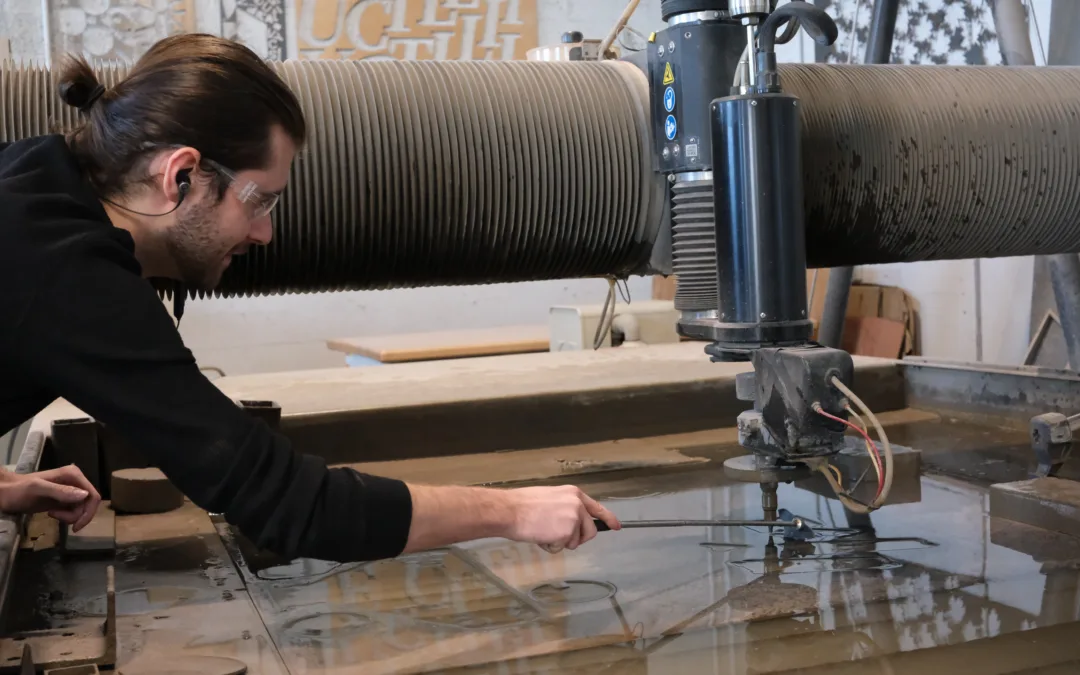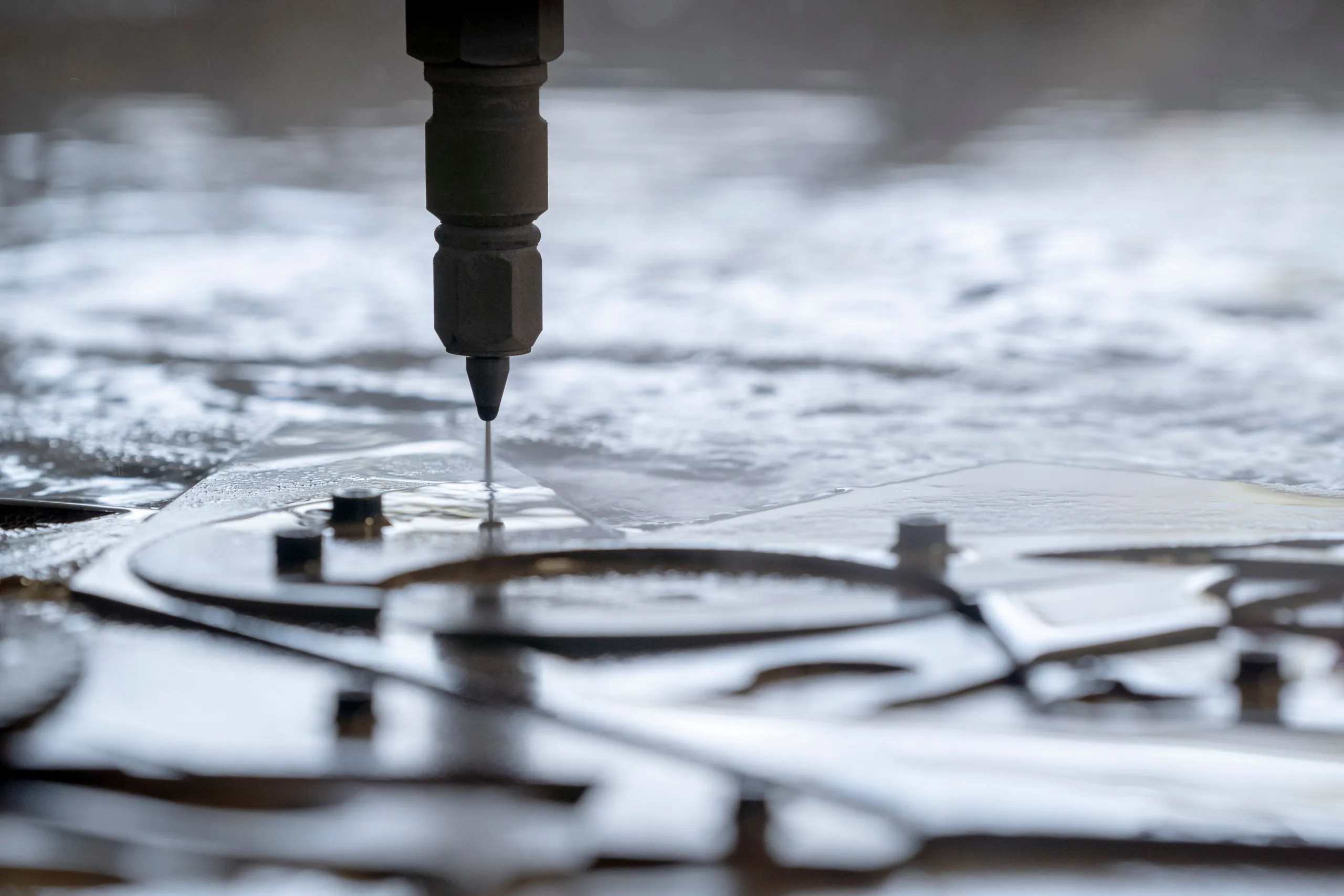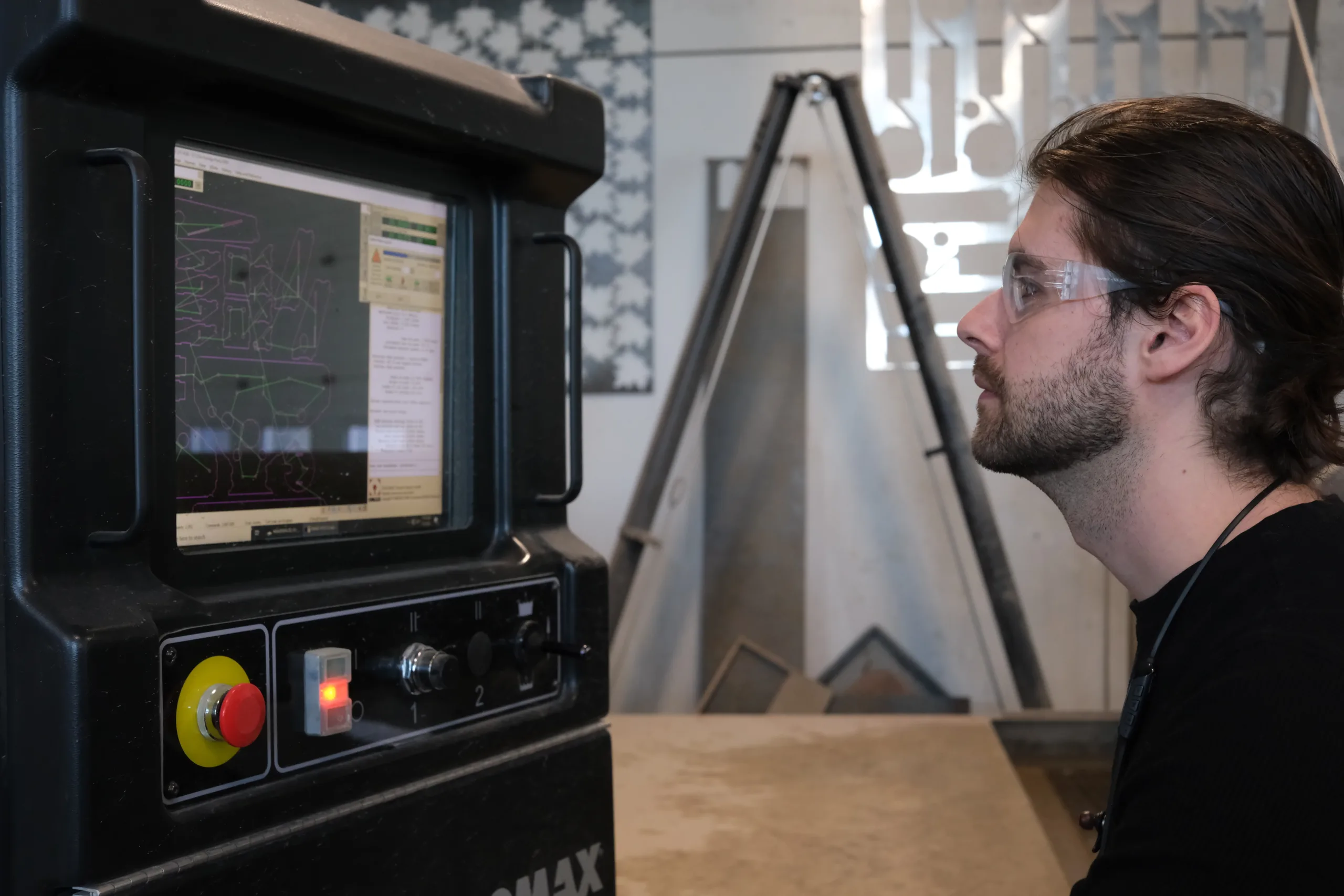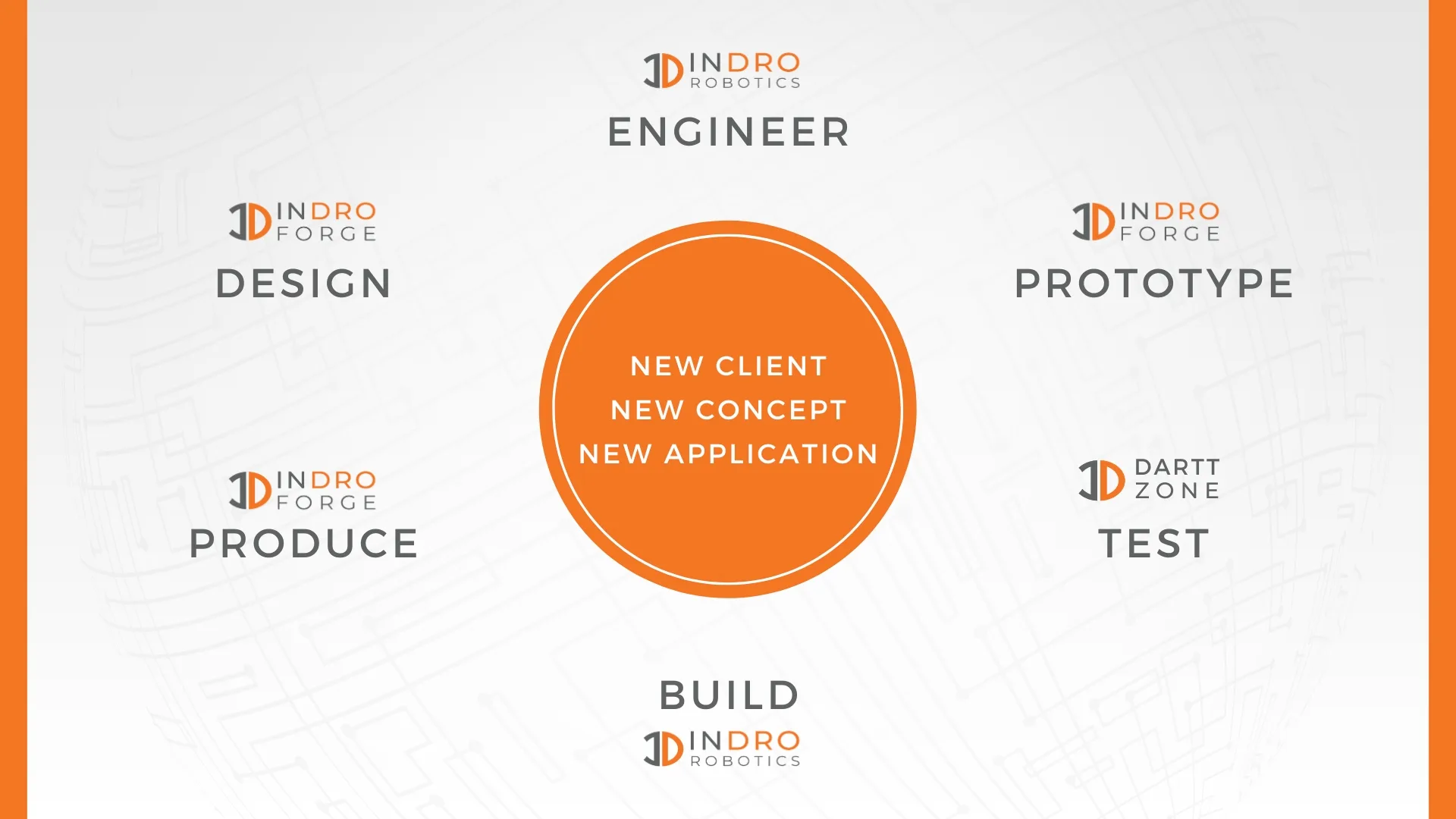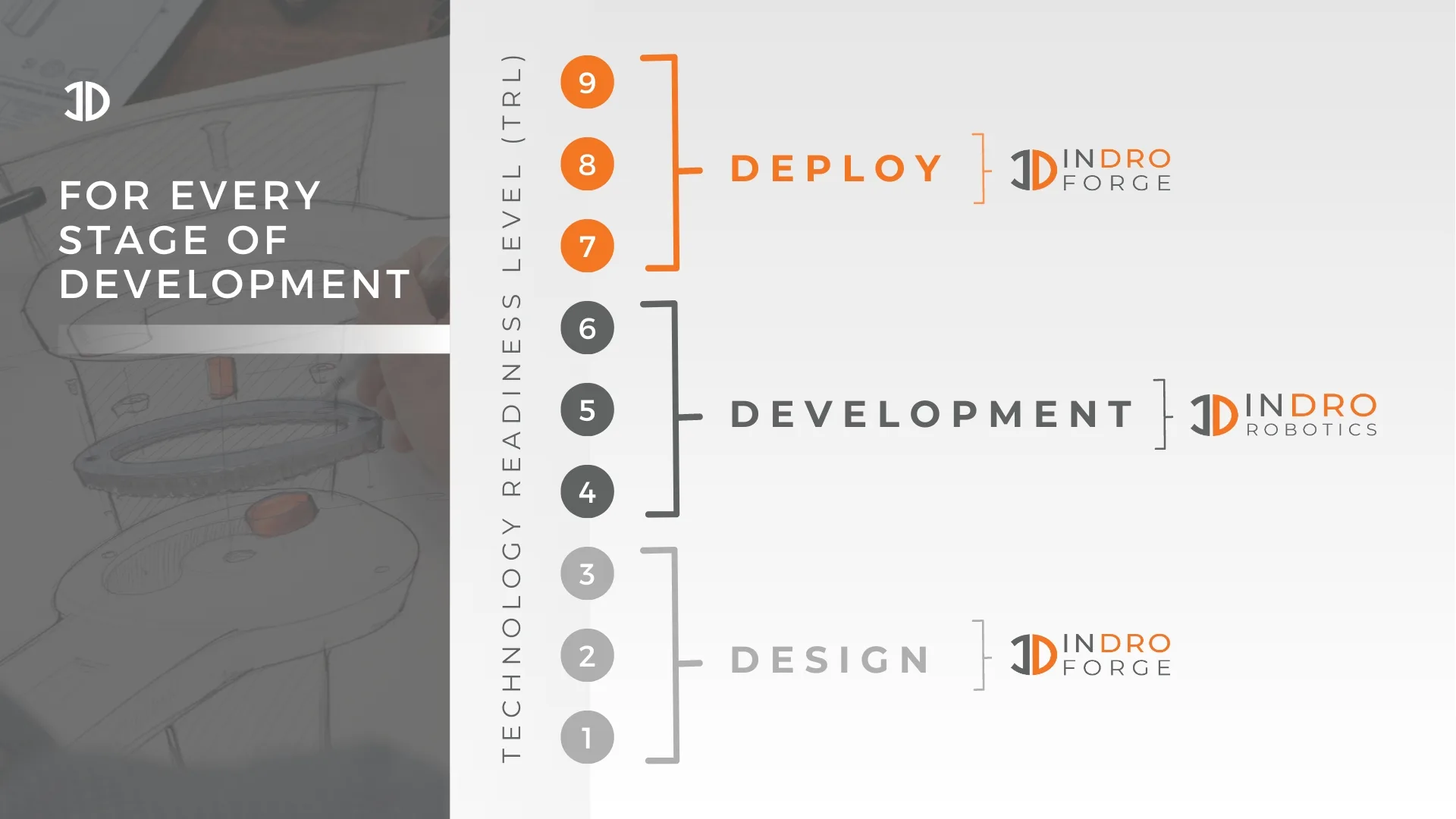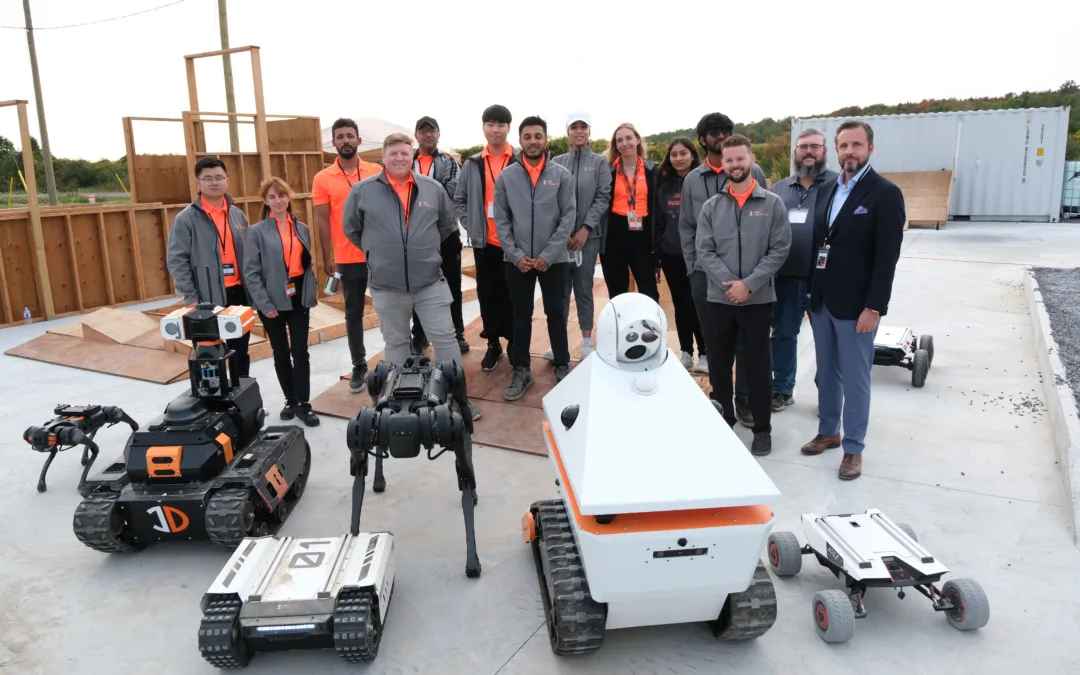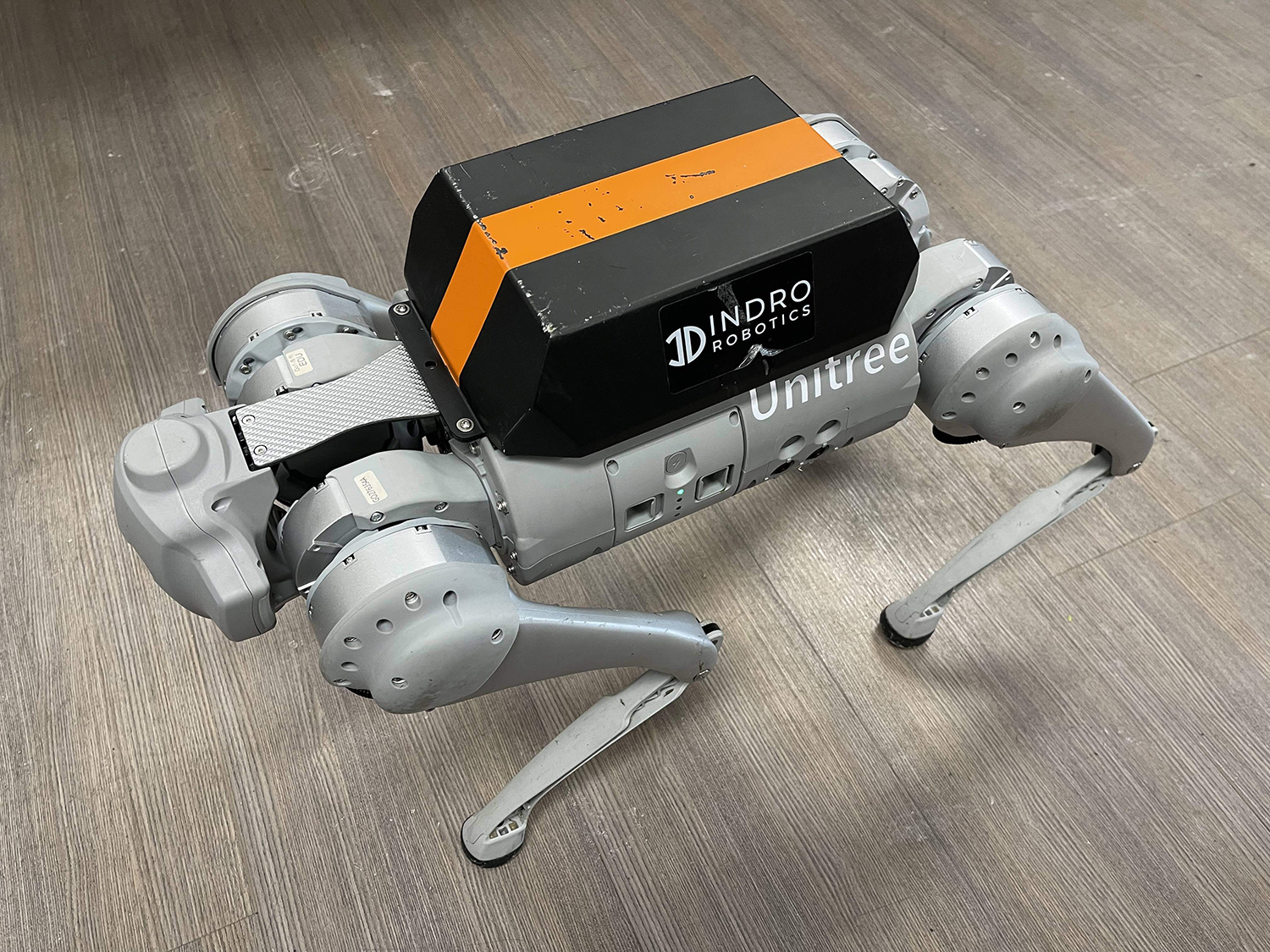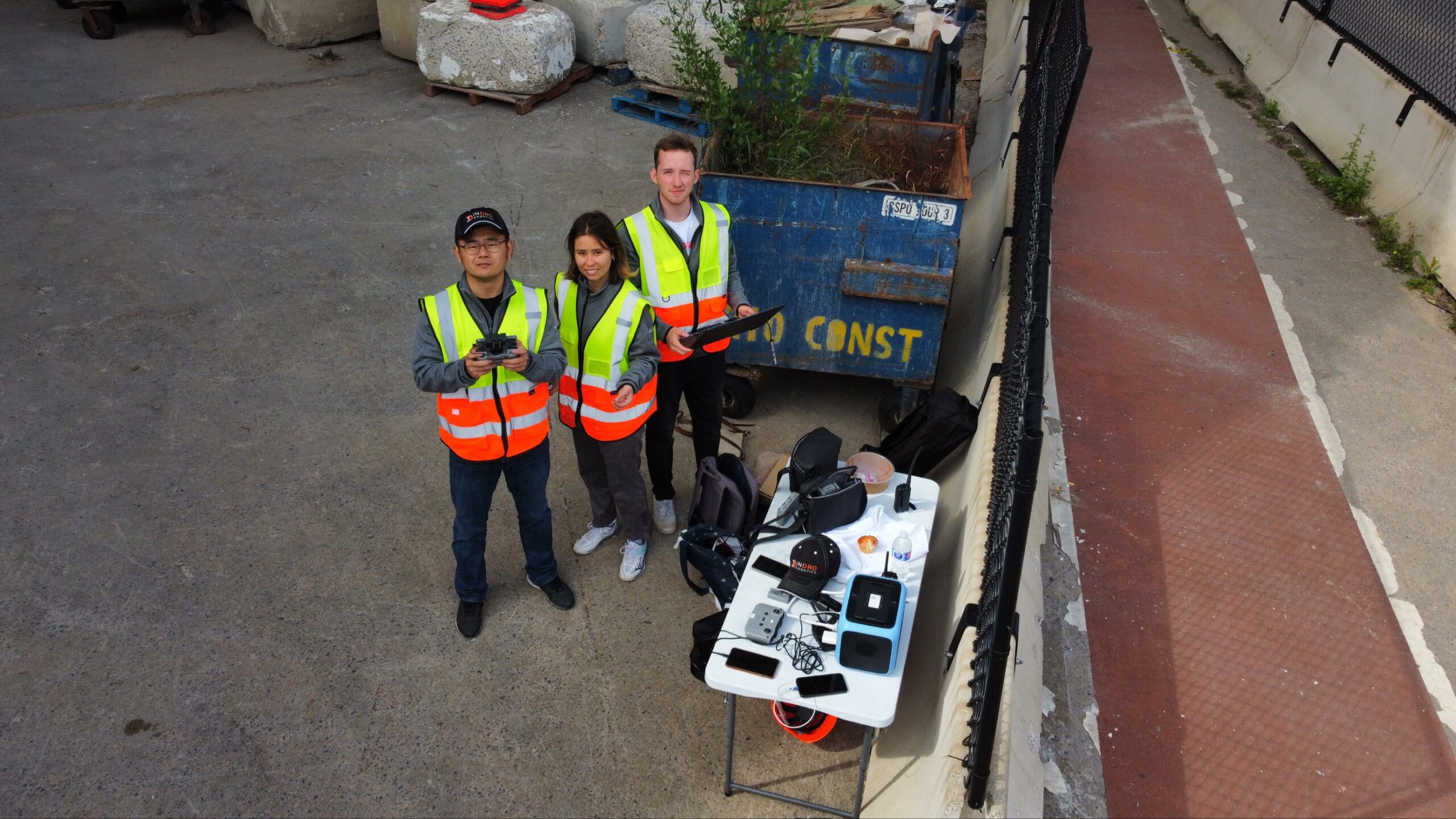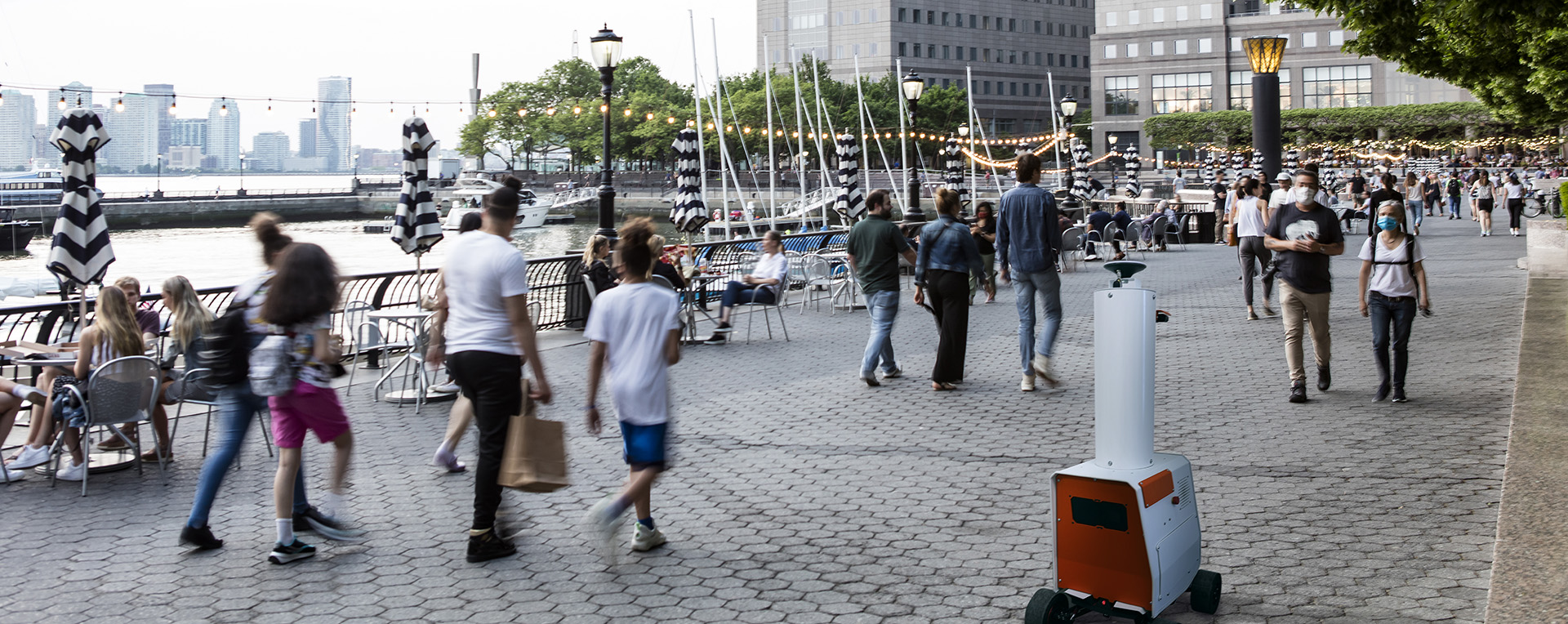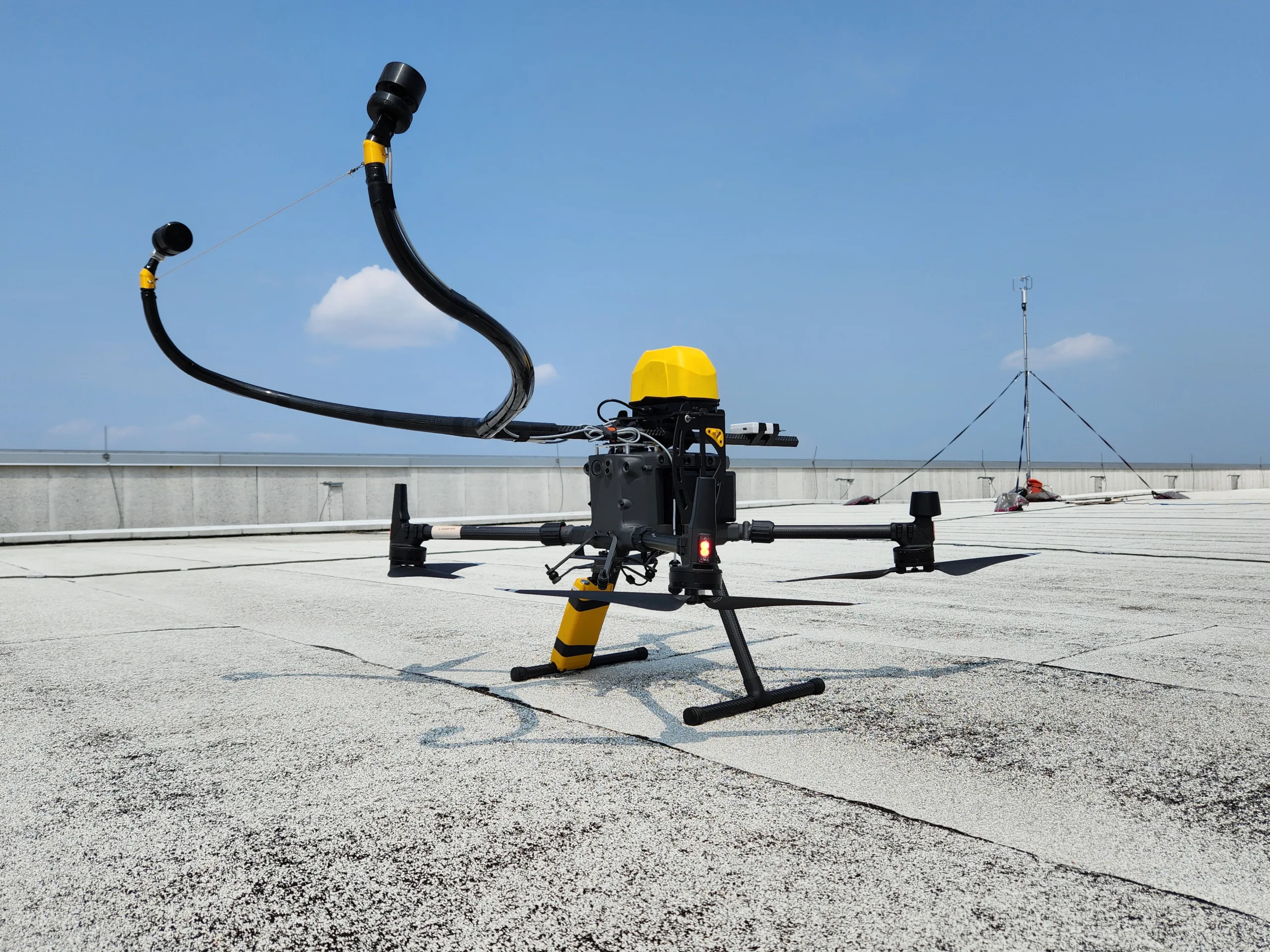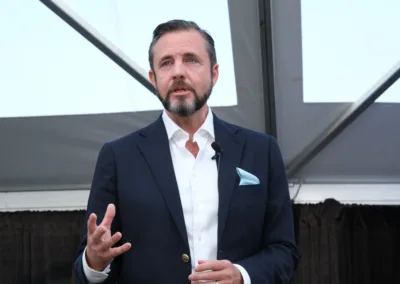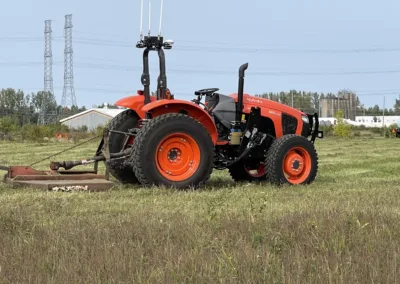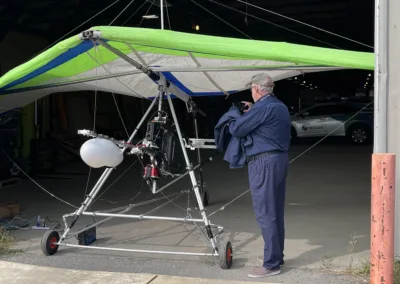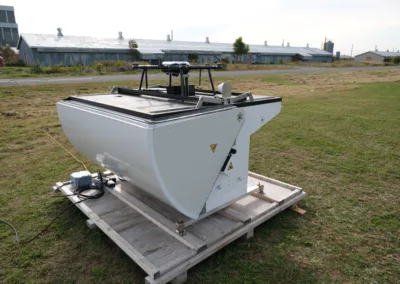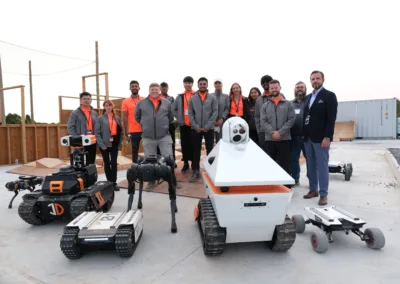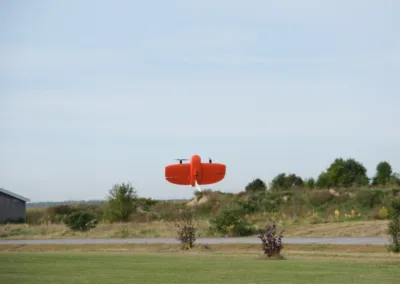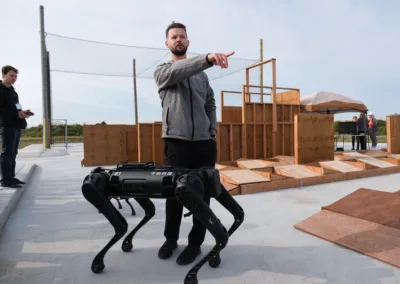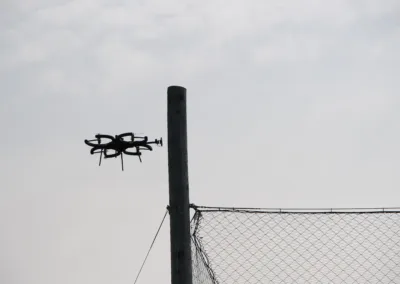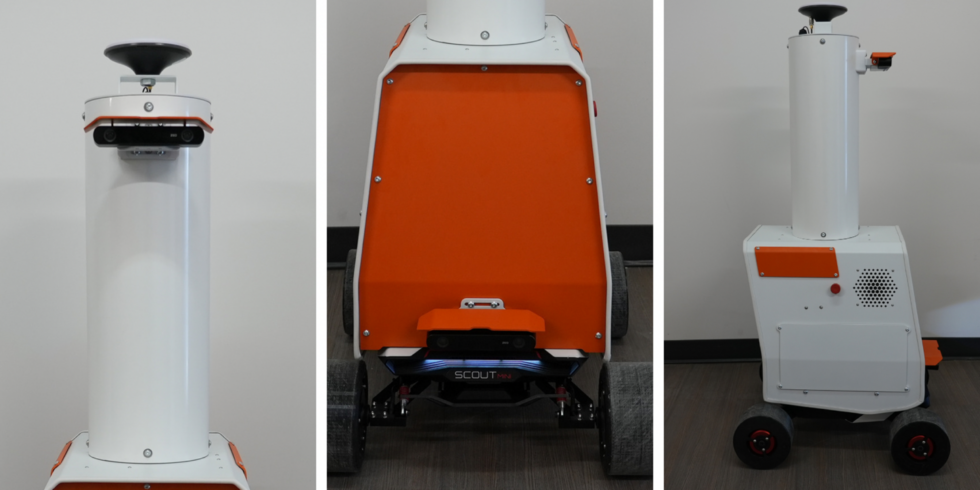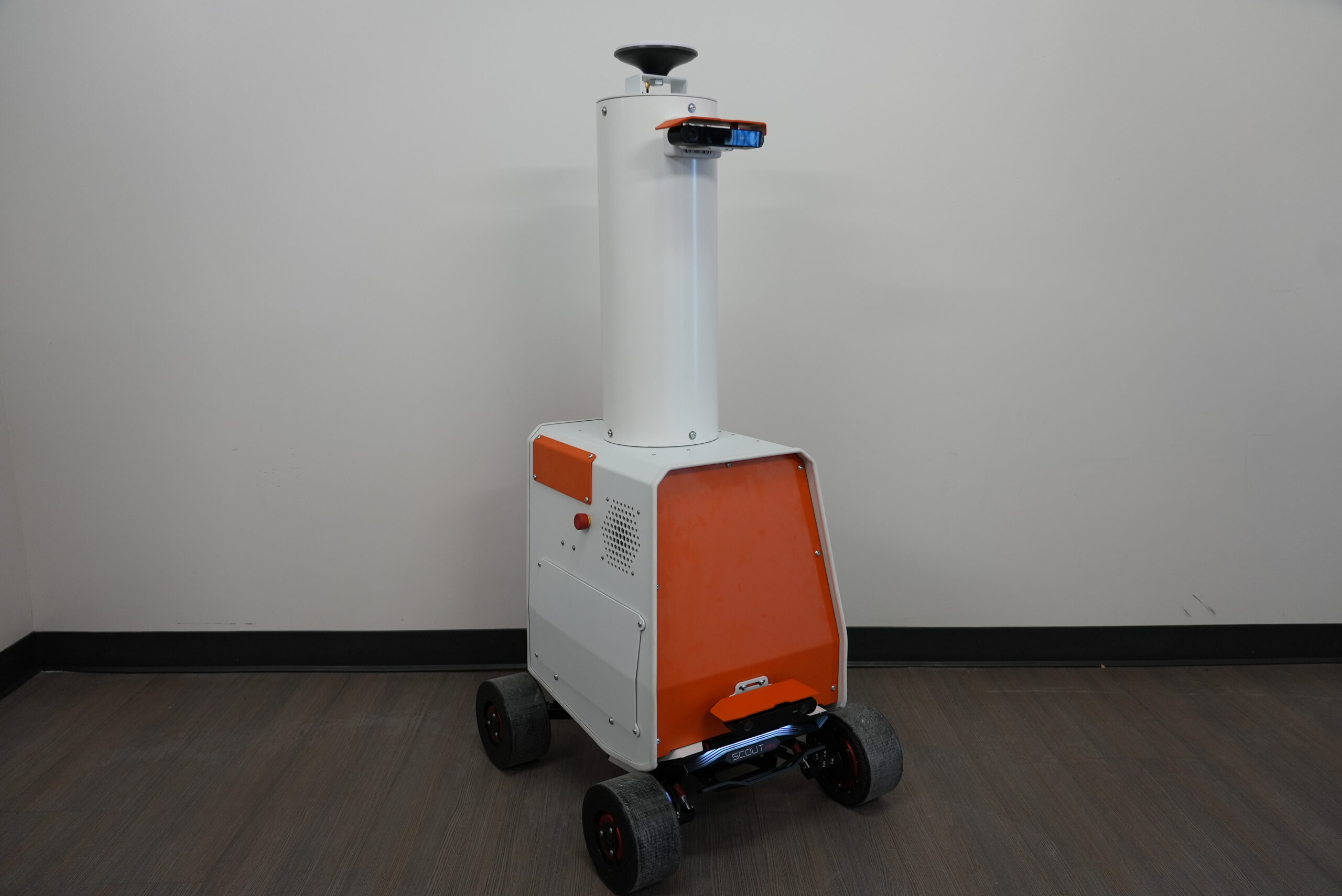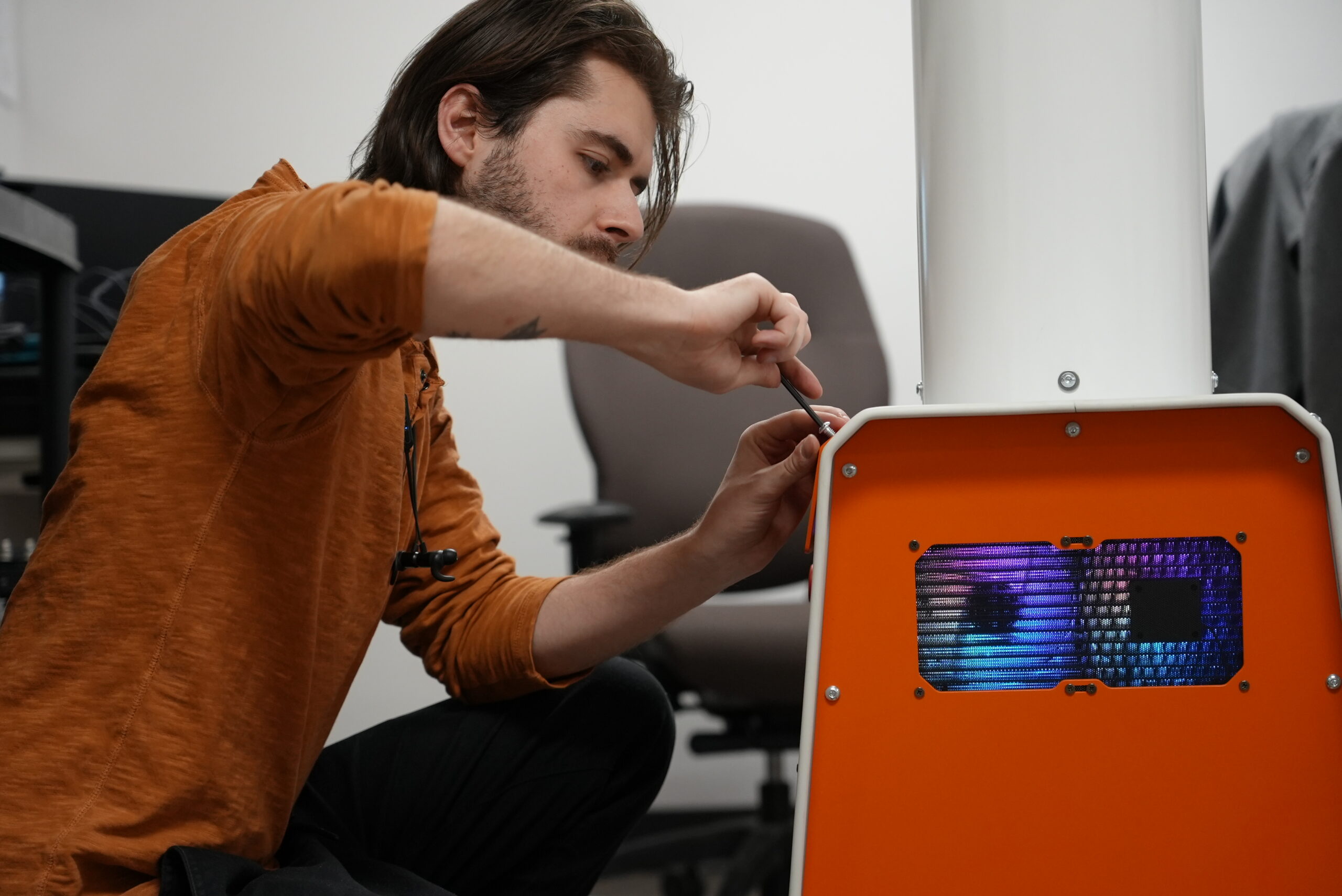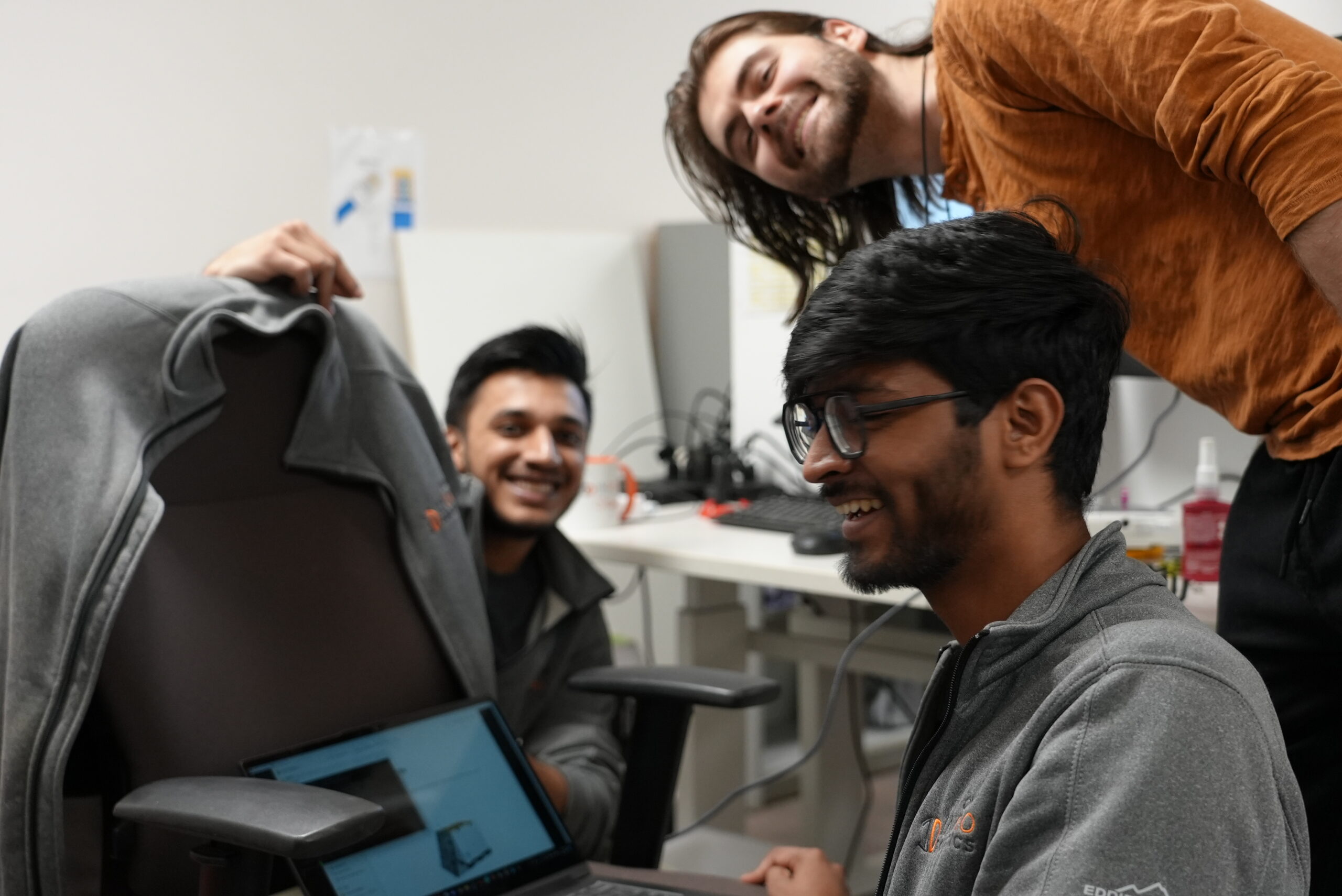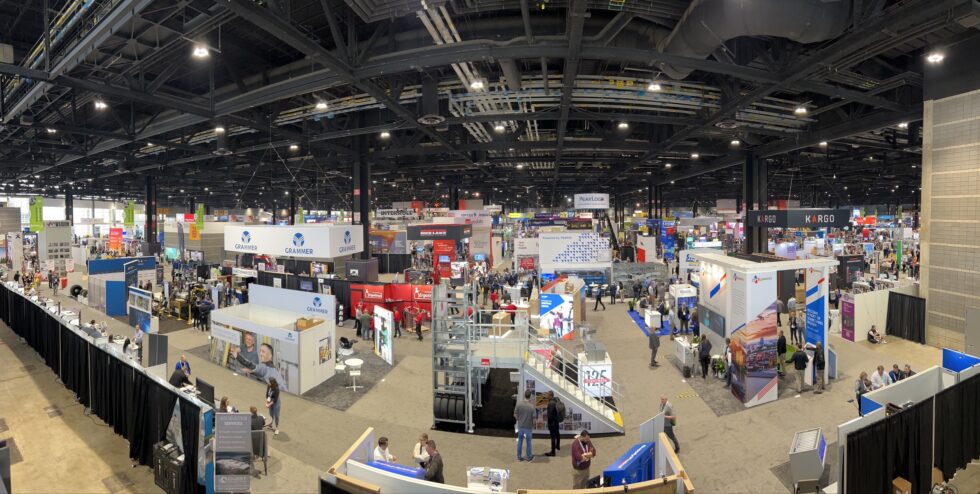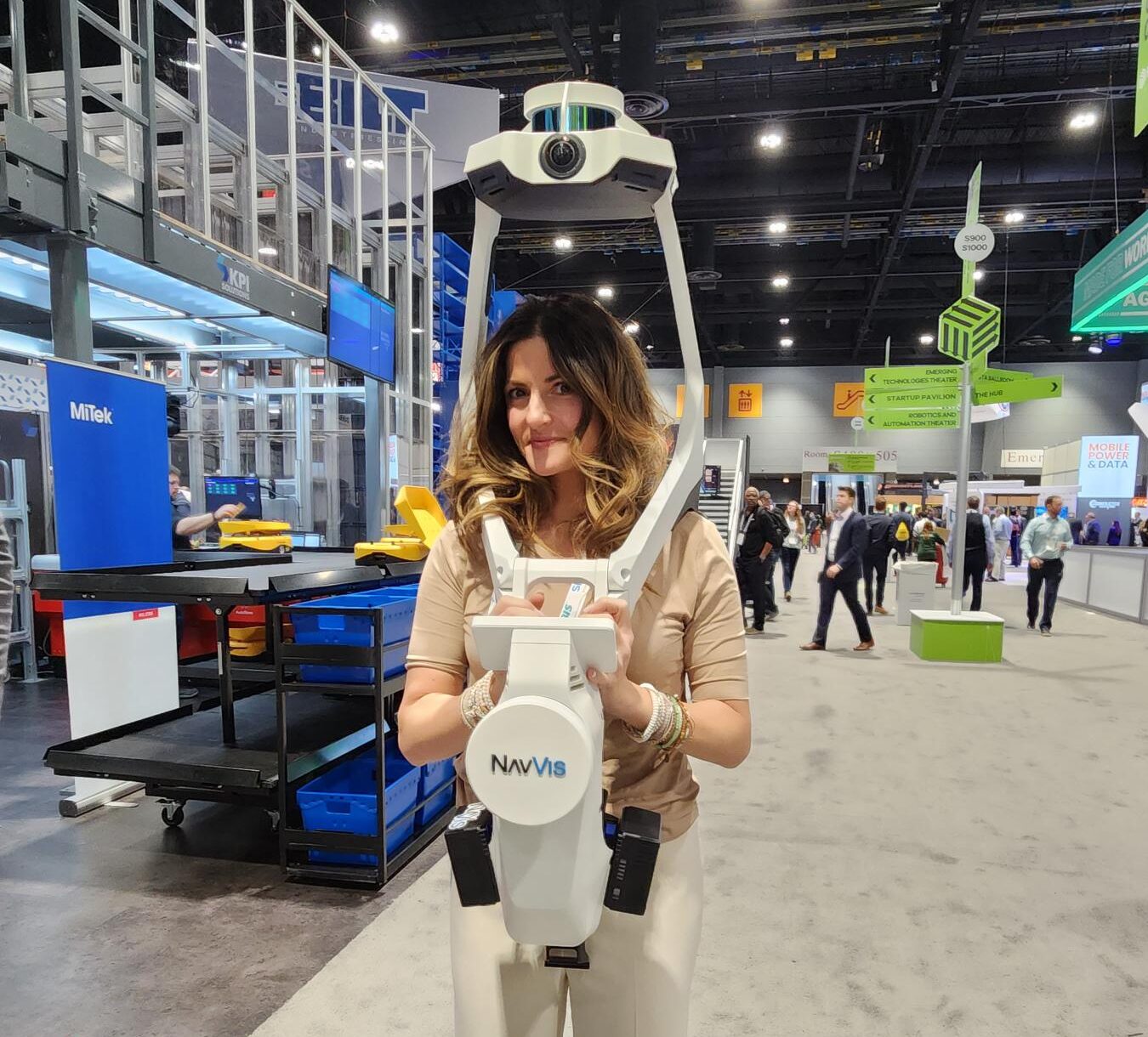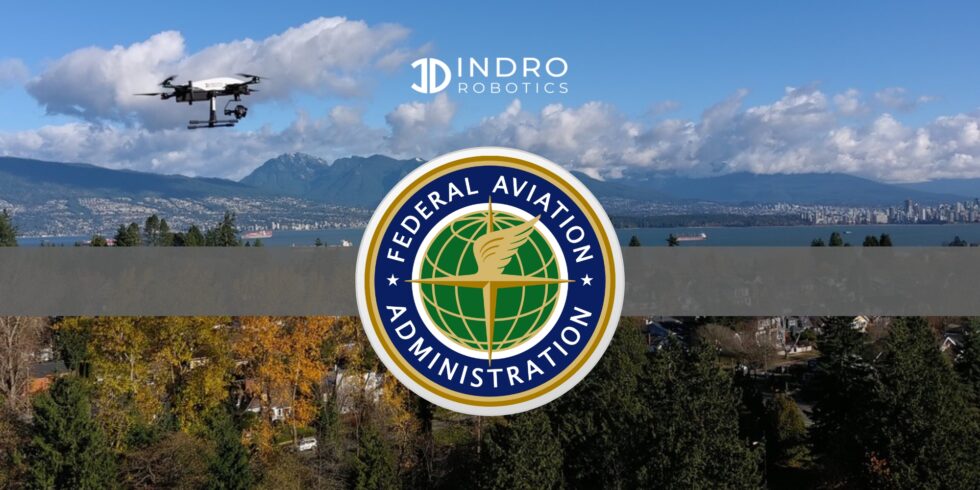
From napkin sketch to prototype reality: InDro Forge does it all
By Scott Simmie
What’s in a name? Let’s take a look at InDro Forge – our custom fabrication and prototyping facility operated by InDro Robotics in collaboration with Invest Ottawa.
The “InDro” part obviously comes from InDro Robotics. But what about that second word?
One of the most common definitions of “forge” is to “produce a fraudulent copy or imitation.” Think currency, signatures, or maybe a work of art. We don’t do that.
Another is to “make or shape (a metal object) by heating it in a fire or furnace and hammering it.” While we don’t have a blast furnace, we do like the imagery here – of taking raw materials and producing useful and functional end products. It’s also easy to picture our engineers and technicians as high-tech blacksmiths, using state-of-the-art tools to achieve similar transformations.
And that also meshes nicely with the third definition: To “create something strong, enduring or successful.” At InDro Forge, we do both. We also forge solid relationships with clients during the production journey. Whether it’s a single part, a fully functioning prototype or even a limited production run, the Forge team does it all.
“InDro Forge – as a whole – is an integration facility for robotics and other client projects where those clients don’t have in-house manufacturing capabilities or expertise,” explains Joel Koscielski, Lead Manufacturing Engineer. InDro Forge has a wide range of high-end tools at its disposal, and the expertise to take something from a concept in someone’s head to a fully functional product in their hands.
“So if they know what they need at a high level, but don’t necessarily know what material to make it out of, or what the right process is, or how to design for those processes to reduce cost – we can provide that expertise to support their prototyping journey, whether that be in robotics or in any other field.”
In other words, InDro Forge turns ideas into reality.
Below: Production Engineer Stephan Tzolov operates the facility’s OMAX water jet table, which can slice through metal and other materials using a focussed, high-pressure slurry. Photo by Scott Simmie
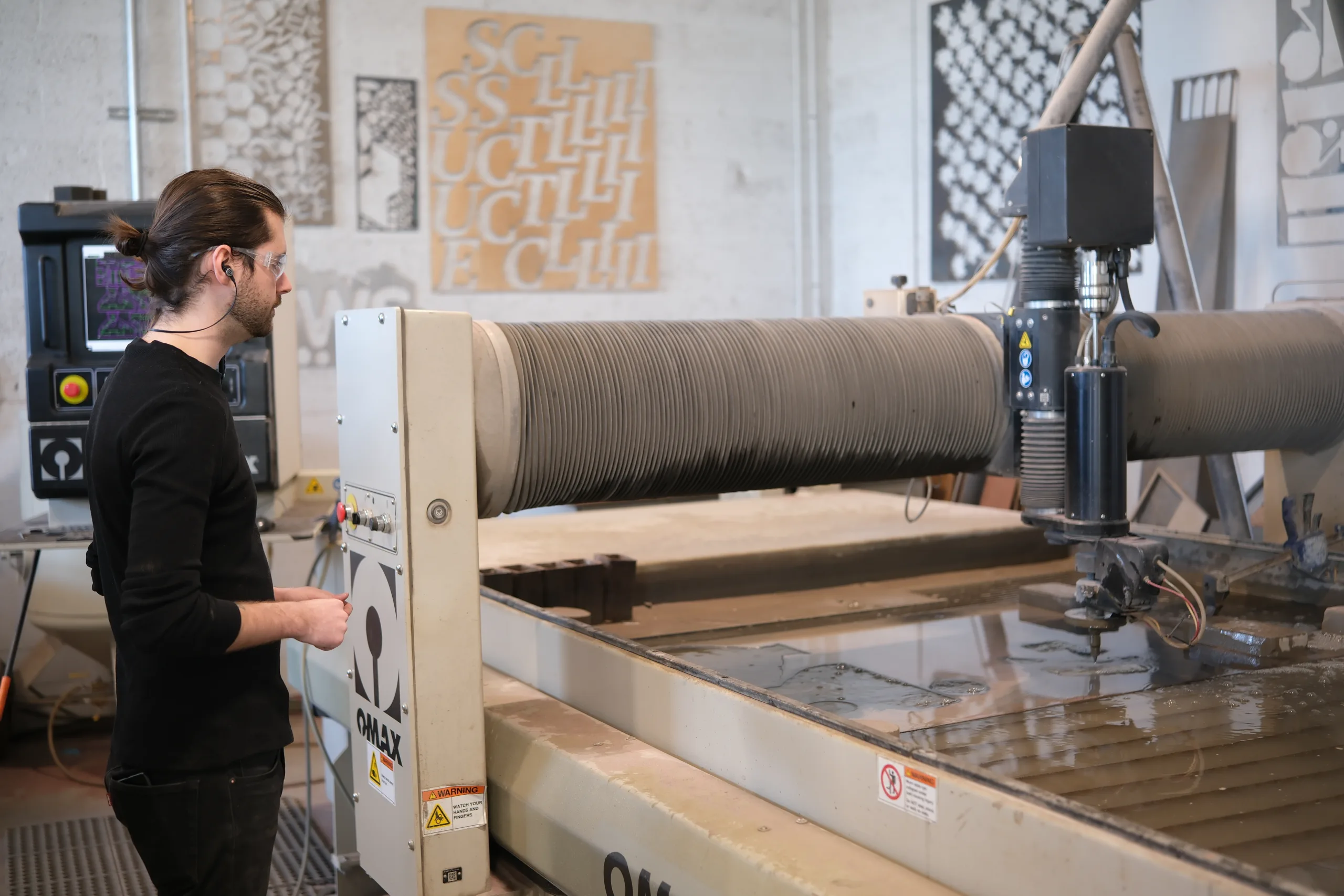
PLUS AND MINUS
When it comes down to basics, there are really two ways to build something. You can do so by adding things together, or taking things away. Someone building a shed takes wood, adds more wood, adds windows and a roof and a door (and, presumably, a floor unless they’re on a really tight budget). That’s a backyard version of additive manufacturing (AM).
On the oppositve end, a sculptor takes a cube of marble and removes the excess material to reveal the inner vision. That’s subtractive manufacturing (SM). The water jet table in the image above is a subtractive tool.
InDro Forge has wide array of AM and SM tools at its disposal, including CNC machines, industrial 3D printers, lasers and more. Many of the projects we work on involve both of those techniques before we integrate the various parts (including electronics and software) to arrive at the final prototype or product.
“We even do things like casting, where we’re taking a mold we’ve created of what the client wants and pouring in a liquid so that either cures as it cools or is cured by ultraviolet light or whatever other kind of process is required,” says Koscielski.
Tools at InDro Forge includes SLS – or Selective Laser Sintering. This is a specialized type of 3D printing particularly suited to parts with complex geometries. Starting with a heap of powder (and there are many types of powders to choose from – including plastics, composites, metal, glass and ceramics), and a laser precisely fuses (sinters) those tiny particles into a solid.
TOOLS, TIMELINES
With such a wide variety of tools available – and the expertise to operate them – Forge has become the one-stop shop for many clients. As Koscielski mentioned, very few companies have these kinds of AM and SM tools in-house. That’s why companies like InDro Forge exist.
One of the differentiators of InDro Forge is its agility. On Friday, August 2 – right before the long weekend – a robotics client called up. They were in a bit of a panic; they had a demo coming up the following week. They needed custom parts printed in a hurry.
“They needed a bunch of parts and didn’t have a printer capable of handling them. They said: ‘Hey, we’re in a bind, we need some help,'” recalls Koscielski. “They asked if we have printers available and if there was any possible way we could spin these up in a couple of days.”
Sound impossible? Not to the InDro Forge team.
“We burned through the weekend and got them what they needed so we could support them as a fellow member of the robotics community. The order came in Friday; the parts were ready to ship on Tuesday.”
Below: Mechatronic engineer Matthieu Tanguay programs InDro Forge’s CNC machine. Photo by Scott Simmie

MAJOR PROJECTS
While the example just cited illustrates our ability to take on smaller, urgent projects with a tight timeline, InDro Forge also executes much larger projects. Much, much larger.
In fact, we’re nearing completion of an entire delivery robot for client Real Life Robotics. The Ontario company specializes in zero-carbon cargo and last mile delivery. Earlier this year, RLR was one of eight Canadian startups selected by the Canadian Food Innovation Network to receive funding through its FoodTech Next program. FoodTech Next offers funding for early-stage Canadian technology firms who seek to be part of – or sell to – the wider food industry. With this funding, RLR will be putting its delivery robot through real-world testing and validating ROI for the Canadian food sector.
One of its core delivery robots is named BUBS. It has been demonstrated across the country, using wireless teleoperation and autonomy to show off its delivery capabilities. But the time had come to upgrade to a sleeker and smarter robot, with a plethora of new features and capabilities. InDro Robotics is RLR’s contract manufacturer, so the company came to InDro Forge to build the next-gen BUBS from the ground up.
“RLR is growing lightning fast and our solution is a customizable platform to fit our client’s exact last-mile delivery needs,” says RLR Founder and CEO Cameron Waite.
“This client had some pretty unique sizing and design requirements – and knowing that the fabricators at Forge have the same depth of engineering experience as our own team builds the trust you need to move fast and meet budgets for a project like this….. The fact they are also a Canadian tech startup and not far away is a bonus,” he adds.
We don’t want to steal their thunder, but this is one of those “everything” projects. InDro Forge worked in tandem with the engineering team from RLR to build, assemble and test the entire robot – on time, on spec and on budget. It incorporates multiple advancements from the first iteration.
“We’ve built a full skeleton electronic system based on RLR’s designs and a suite of sensors to be able to do the autonomy, as well as an exterior shell that allows them to do remote, last-mile delivery,” says Koscielski.
And BUBS 2.0 will have much more on board than its predecessor.
“This next version of BUBS takes much of the learnings from the last year and brings them to reality. We’ve done countless customer demos and interviews to learn and iterate as a result,” says Waite. “BUBS has a number of new features that our engineering team is really proud of – and we look forward to sharing those soon.”
The skeletal structure for BUBS is all aluminum, and was cut using the water jet table. Those parts were then welded and powder-coated. Smaller brackets used to affix electronics (and this machine has a lot of electronics) were produced by the Prusa MK3.5 3D printers (Forge has three of them).
Like all 3D printers, the Prusa has limitations to the dimensions of the objects it can produce. It can manufacture very strong, high-resolution parts using a number of different plastics and composites, but it can’t print anything huge. Because BUBS is a large robot, it needed some very large parts for its outer shell. Forge had the solution.
BIGREP ONE
BigRep is a German company, known for its award-winning industrial 3D printers. The BigRep ONE is capable of printing objects up to one cubic metre. It is one of the key tools at InDro Forge for large-scale projects like BUBS. The machine is compatible with eight different types of printing material, depending on the application requirements. (One of those materials is water-soluable and perfect for support structures – those lattice-like bits that help support the complex main structures as they’re being printed. When complete, water turns that plastic into something with the consistency of thick syrup and it can be easily removed by hand.)
Because the side panels of BUBS are large, BigRep ONE was the perfect solution.
“We used the BigRep to print the side panels in two pieces and glued them together to make those large parts – and in a fraction of the time that it would take using any of the other methods,” says Koscielski. “In doing the two sides we went through just over 13 kilos of material over the span of about six days.”
For Real Life Robotics, the capabilities and machines at InDro Forge were a perfect fit.
“InDro Forge accelerates my ability to take our designs and get my product to market; we’d have to spin up an entire manufacturing department to do these things,” says Waite. “The team at Forge is professional and exceptionally talented. They’ve been able to take our vision and designs and turn them into reality.”
There’s a lot we could say about the capabilities of BigRep ONE – including the fact there are but 350 worldwide and only a handful in Ontario. But we’ll let the company give you a more complete picture with this video:
INDRO’S TAKE
September will mark the first anniversary since what was formerly known as the Bayview Yards Prototyping Lab became InDro Forge. A lot has happened since then, including additional staff with engineering and design expertise, the hiring of a sales and client relations specialist, and – in February – a new strategic roadmap for the future.
“In addition to prototypes, we are now equipped to take on clients with projects at any point along the Technology Level Readiness (TLR) scale,” says InDro Robotics Founder and CEO Philip Reece. “There are some very good prototyping labs in Ontario. But what elevates our value proposition is that InDro Forge, when required, has the full engineering support of the InDro Robotics team at Area X.O. That’s a winning combination, and we have proven that with increasingly complex projects over the past year.”
So whether you’ve got an idea floating around in the back of your head – or fully formed specs for a new robot or other technology – InDro Forge is ready.
Are you? Get in touch with Account Executive Callum Cameron here.

